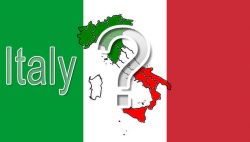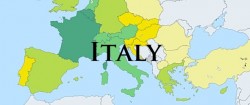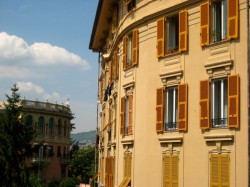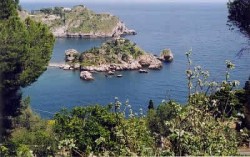ITALY CHRONICLES
Latest Posts
Berlusconi Heart
On Thursday in Italy headlines were dominated by the news that Silvio Berlusconi, a former and controversial prime minister, required an urgent heart operation and had
Money People – The World’s Biggest Problem
What’s that old saying? Ah yes, “money is the root of all evil”. From what is happening in Italy and elsewhere around the world, there
Italy’s Rome Mafia Case
Italy’s capital, Rome, has been run by a mafia-type gang of criminals and politicians for years is what investigations and arrests have been revealing. Although
Listen to Italian Christmas music this Festive Season
If you’d like to add a little interest to this coming festive season, why not fill the atmosphere of your home, office or even Italian
Ferrari Gets a New Boss
Luca Cordero di Montezemolo is to leave the helm of Italian sports car maker Ferrari in mid-October. Rumours about the change had been flying around
Money People – The World’s Biggest Problem
What’s that old saying? Ah yes, “money is the root
Italy’s Rome Mafia Case
Italy’s capital, Rome, has been run by a mafia-type gang
Listen to Italian Christmas music this Festive Season
If you’d like to add a little interest to this
Ferrari Gets a New Boss
Luca Cordero di Montezemolo is to leave the helm of
Italy

Have a Fine Time in Italy with these Travel Safety Tips
First of all, Italy is generally a safe country to travel in. However the unwary can end up with problems. The biggest of these problems
Setting Up a Restaurant in Italy
With Italy’s complex employment laws and fiddly bureaucracy setting up a restaurant and making it successful appears to be no easy task.

Dietrologia – Gossipy Conspiracy Theory in Italy
Somewhat fittingly in Italy, the land which gave the world the term Machiavellian, the word “dietrologia” exists in Italian and can be found in Italian
A Revolutionary Pancreatic Cancer Treatment – Italians on TED
Pancreatic cancer is a killer. It killed Italian opera legend Luciano Pavarotti and Apple supremo, Steve Jobs. It may be killing someone you hold dear.
Discover the Hottest Italian Fashion Trends: Unveiling the Best Styles
Italian fashion has long been synonymous with style, elegance, and craftsmanship. With a rich history and a strong influence from Italian designers, Italian fashion trends
The Best Luxury Hotels in Milan
Maybe you are planning a long weekend or even planning to spend a week in Milan shopping to your hearts content. If so, then here

Italian Culture: What Are Italians Like?
Italians are good people by and large. They have their faults, but then doesn’t everyone. I work with a local business school and I have to say that the staff there are absolutely wonderful.
Should You Try Alpestre Liqueur – a Potent Italian Herbal Tipple?
While browsing the endless delights on offer at my local
Properties
House For Sale near Milan
Gaetano Salvo, friend and Blog from Italy researcher wants to sell his house. For those who might be interested, or may know of someone or

How to Find Property for Rent in Italy
Maybe you are coming to Italy to work or study here for a while, in which case, you’ll need somewhere to live. If that’s the

The Admirable Admiral’s Villa in Taormina
If you know your history pretty well, you may be aware that one of England’s most celebrated Admirals possessed a rather charming villa in the scenic Sicilian town of Taormina.
House For Sale near Milan
Gaetano Salvo, friend and Blog from Italy researcher wants to sell his house. For those who might be interested, or may know of someone or

How to Find Property for Rent in Italy
Maybe you are coming to Italy to work or study here for a while, in which case, you’ll need somewhere to live. If that’s the
Places to stay in Italy
Villa Miller Bed and Breakfast, Puglia, Italy
Located well off the main road in the depths of the Puglia countryside, Villa Miller the only sounds which disturb guests are those of the crickets and the ringing of the bells worn by the areas cow and sheep population.
Casa Villatalla B&B, Liguria
By far the most important members of the Casa Villatalla household are Nellie (an elderly but loveable chocolate Labrador), Bonnie, a fluffy and rather scatty American Spaniel, and Pickle, aneccentric cat who walks like John Wayne.
Baur Bed and Breakfast, Acqui Terme, Piedmont
“You may have the universe if I may have Italy.“ – Giuseppe Verdi (1813-1901) Is the quotation which greets you when you visit the Baur B&B website, demonstrating how enchanting the owners find Italy.
Chaplin Bed and Breakfast Rome
Perfectly located in a safe and quiet but extremely central Rome neighborhood, the Chaplin Bed and Breakfast Rome is the ideal base for your Roman holiday.
Villa Miller Bed and Breakfast, Puglia, Italy
Located well off the main road in the depths of the Puglia countryside, Villa Miller the only sounds which disturb guests are those of the crickets and the ringing of the bells worn by the areas cow and sheep population.

